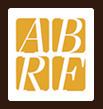The Association of Biomolecular Resource Facilities (ABRF) is dedicated to advancing core and research biotechnology laboratories through research, communication, and education. ABRF members include over 800 scientists representing 267 different core laboratories in 41 countries, including those in industry, government, academic and research institutions.
In 1986 a Research Resource Facility Satellite Meeting was held in conjunction with the Sixth International Conference on Methods in Protein Sequence Analysis. The next year protein sequencing and amino acid samples were sent to survey 103 core facilities. By 1989 the ABRF was formally organized and incorporated. Each year an annual meeting was held as a satellite meeting of the Protein Society until 1996 when separate meetings began.
Research Groups are established to fulfill two of the purposes of the Association of Biomolecular Resource Facilities. First, to provide mechanisms for the self-evaluation and improvement of procedural and operational accuracy, precision and efficiency in resource facilities and research laboratories. Second, to contribute to the education of resource facility and research laboratory staff, users, administrators, and interested members of the scientific community.
ABRF Next Generation Sequencing Group (ABRF-NGS)Antibody Technology Research Group (ARG)Biomedical ‘Omics Research Group (BORG)DNA Sequencing Research Group (DSRG)Flow Cytometry Research Group (FCRG)Genomics Research Group (GVRG)Glycoprotein Research Group (gPRG)Light Microscopy Research Group (LMRG)Metabolomics Research Group (MRG)Metagenomics Research Group (MGRG)Molecular Interactions Research Group (MIRG)Nucleic Acids Research Group (NARG)Protein Expression Research Group (PERG)Protein Sequencing Research Group (PSRG)Proteomics Research Group (PRG)Proteomic Informatics Research Group (iPRG)Proteomic Standards Research Group (sPRG)Members of ABRF are involved in a broad spectrum of biomolecular technologies that are implemented in core facility settings:
Automation: high throughput screening, LIMS, robotics.Protein/Peptide Chemistry: amino acid analysis, N- and C-terminal sequencing, peptide synthesis, peptide/protein arrays.Biophysics: calorimetry, CD, fluorescence, light scattering, SPR, ultracentrifugation.Flow Cytometry Fluorescence Activating Cell SortingProtein Expression, Identification, and Profiling: differential fluorescence, conventional 2-D gel electrophoresis, disease biomarker discovery.Gene Expression and Profiling: gene arrays, real-time PCR.Mass Spectrometry: qualitative, quantitative, and structural analysis of proteins, carbohydrates, oligonucleotides, and lipids.Microscopy light microscopy and imaging, Confocal MicroscopyNucleic Acid Chemistry: DNA sequencing, DNA synthesis, RNA synthesis, genotyping.Separations: 1- and 2-D PAGE, capillary electrophoresis, chromatography.Quality Control: GLP, GMP, quality and compliance.Universal Proteomics Standard (UPS), a mixture of proteins used as reference standard in proteomics, introduced by the above-mentioned sPRG. This includes two sets: the original (UPS1, where all 48 proteins are at 48 pmol), and a dynamic range of concentrations (called UPS2), ranging from 500 amol to 50 pmol.Other: bioinformatics, carbohydrate analysis, differential display, recombinant protein production.Every year the Association of Biomolecular Resource Facilities annual conference is held during the spring in a varying North American city. This international conference is used to expose members to new and emerging biotechnology through lectures, roundtables, Research Group presentations, poster sessions, workshops and technical exhibits.
ABRF 2015, March 28-31, St. Louis, Missouri; Integrative Technologies for Advancing Scientific CoresABRF 2014, March 23-25, Albuquerque, New Mexico; Team Science and Big Data: Cores at the FrontierABRF 2013, March 2-5, Palm Springs, California; Tools for the Advancement of Convergence ScienceABRF 2012, March 17–20, Orlando, Florida; Learning From BiomoleculesABRF 2011, February 19–22, San Antonio, Texas; Technologies to Enable Personalized MedicineABRF 2010, March 20–23, Sacramento, California; Translating Basic Research With Advances in Biomolecular TechnologyABRF 2009, February 7–10, Memphis, Tennessee; Application and Optimization of Existing and Emerging BiotechnologiesABRF 2008, February 9–12, Salt Lake City, Utah; Enabling Technologies in the Life SciencesABRF 2007, March 31- April 3, Tampa, Florida; Creating the Biological RoadmapABRF 2006, February 11–14, Long Beach, California; Integrating Science, Tools and Technologies with Systems BiologyABRF 2005, February 5–8, Savannah, Georgia; BioMolecular Technologies: Discovery to HypothesisABRF 2004, February 28- March 2, Portland, Oregon; Integrating Technologies in Proteomics and GenomicsABRF 2003, February 10–13, Denver, Colorado; Translating Biology Using Proteomics and Functional GenomicsABRF 2002, March 9–12, Austin, Texas; Biomolecular Technologies: Tools for Discovery in Proteomics and GenomicsABRF 2001, February 24–27, San Diego, CA; The New Biology: Technology for resolving Macromolecular CommunicationsABRF 2000, February 19–22, Bellevue, Washington; From Singular to Global Analyses of Biological SystemsABRF 1999, March 19–22, Durham, North Carolina; Bioinformatics and Biomolecular Technologies: Linking Genomes, Proteomes and BiochemistryABRF 1998, March 21–24, San Diego, California; From Genomes to Function - Technical Challenges of the Post-Genome EraABRF 1997, February 9–12, Baltimore, Maryland; Techniques at the Genome-Proteome InterfaceABRF 1996, March 30- April 2, San Francisco, California; Biomolecular TechniquesThe ABRF Award is presented at the annual ABRF meeting for outstanding contributions to Biomolecular Technologies. Past Award Winners:
2015 John G. White and William Bradshaw Amos for the development of high-resolution, laser scanning confocal microscope2014 Patrick H. O'Farrell, for the development of 2-dimensional gel electrophoresis.2013 Leonard Herzenberg and Leonore Herzenberg for the development of Flow Activated Cell Sorting (FACS).2012 Alan G. Marshall for the development of Fourier Transform Ion Cyclotron Resonance (FT-ICR) Mass Spectrometry.2011 Sir Alec John Jeffreys: Developed techniques for DNA fingerprinting and DNA profiling2010 Pat Brown: Pioneering work in the development of microarrays, and the diverse applications of this technology in genetic research.2009 Mathias Uhlen2008 Ruedi Aebersold2007 Donald F. Hunt2006 Roger Tsien2005 Stephen Fodor2004 Edwin Southern2003 Franz Hillenkamp and Michael Karas2002 John Fenn2001 Csaba Horvath2000 Leroy Hood1999 Marvin Caruthers for pioneering contributions to the chemical synthesis of DNA and RNA1998 Bruce Merrifield1997 Lloyd M. Smith1996 David Lipman1995 Klaus Biemann1994 Frederick SangerThe ABRF is the publisher of the Journal of Biomolecular Techniques. The journal is peer-reviewed and is published quarterly. The major focus of the journal is to publish scientific reviews and articles related to biomolecular resource facilities. The Research Group published reports include annual surveys. News and events, as well as an article watch focused on techniques used in typical core facility environments are also included.
Sheenah Mische, Co-Editor in Chief, NYU Langone Medical CenterRon Orlando, Co-Editor in Chief, University Of GeorgiaBill Hendrickson, ABRF President, University of Illinois at ChicagoPaula Turpen, Secretary/Treasurer University of Nebraska Medical CenterGeorge Grills Cornell University Life Sciences Core Laboratories CenterTimothy Hunter, University of Vermont Advanced Genome Technologies CoreAnoja Perera Stowers Institute for Medical ResearchBrett Phinney UC Davis Genome Center - Proteomics Core FacilityChris Colangelo Yale UniversityFrances Weis-Garcia Memorial Sloan Kettering Cancer Center
